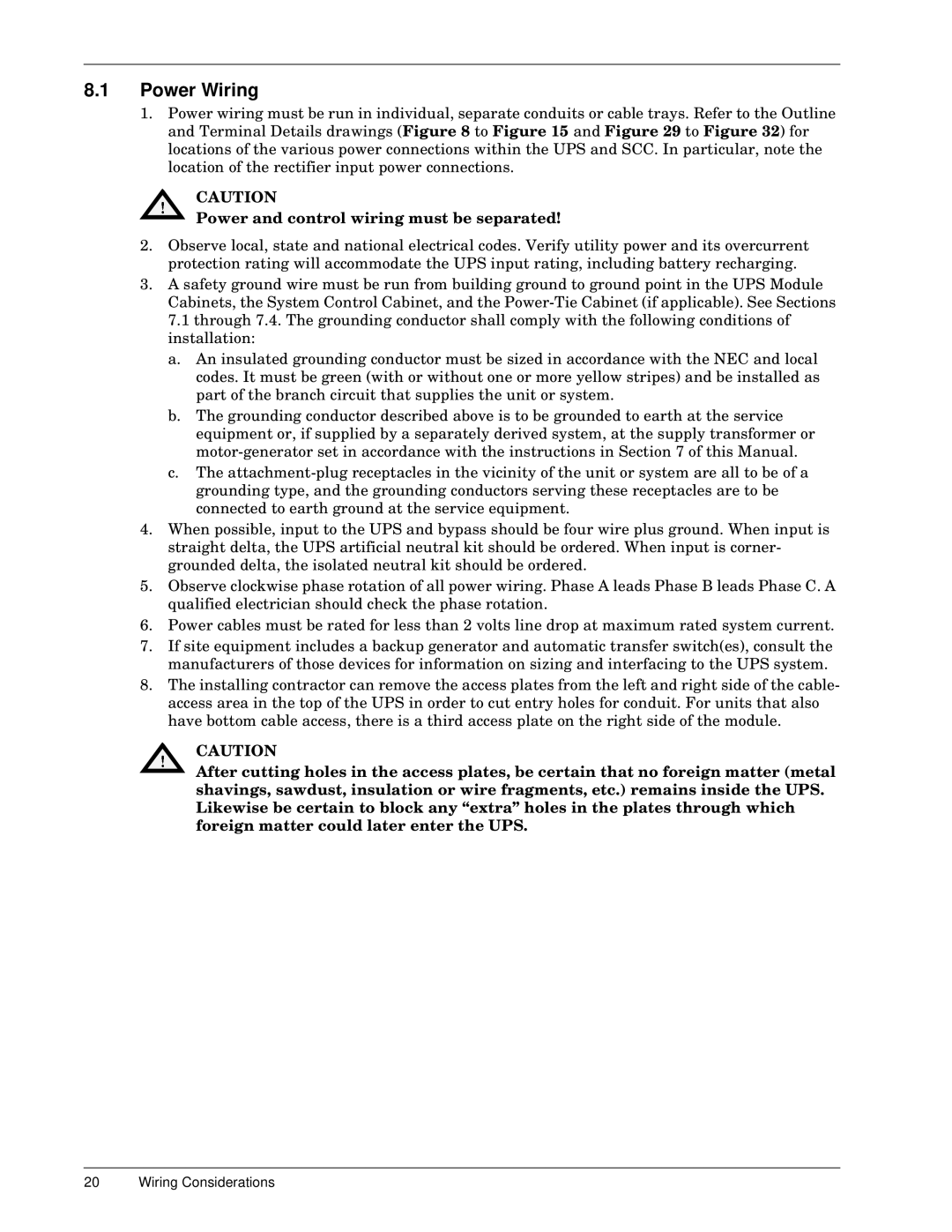CAUTION
After cutting holes in the access plates, be certain that no foreign matter (metal shavings, sawdust, insulation or wire fragments, etc.) remains inside the UPS. Likewise be certain to block any “extra” holes in the plates through which foreign matter could later enter the UPS.
6. Power cables must be rated for less than 2 volts line drop at maximum rated system current.
7. If site equipment includes a backup generator and automatic transfer switch(es), consult the manufacturers of those devices for information on sizing and interfacing to the UPS system.
8. The installing contractor can remove the access plates from the left and right side of the cable- access area in the top of the UPS in order to cut entry holes for conduit. For units that also have bottom cable access, there is a third access plate on the right side of the module.
An insulated grounding conductor must be sized in accordance with the NEC and local codes. It must be green (with or without one or more yellow stripes) and be installed as part of the branch circuit that supplies the unit or system.
The grounding conductor described above is to be grounded to earth at the service equipment or, if supplied by a separately derived system, at the supply transformer or motor-generator set in accordance with the instructions in Section 7 of this Manual. The attachment-plug receptacles in the vicinity of the unit or system are all to be of a grounding type, and the grounding conductors serving these receptacles are to be connected to earth ground at the service equipment.
Power and control wiring must be separated!
CAUTION
8.1Power Wiring
1.Power wiring must be run in individual, separate conduits or cable trays. Refer to the Outline and Terminal Details drawings (Figure 8 to Figure 15 and Figure 29 to Figure 32) for locations of the various power connections within the UPS and SCC. In particular, note the location of the rectifier input power connections.
2. !Observe local, state and national electrical codes. Verify utility power and its overcurrent protection rating will accommodate the UPS input rating, including battery recharging.
3. A safety ground wire must be run from building ground to ground point in the UPS Module Cabinets, the System Control Cabinet, and the Power-Tie Cabinet (if applicable). See Sections 7.1 through 7.4. The grounding conductor shall comply with the following conditions of installation:
a.
b.
c.
4. When possible, input to the UPS and bypass should be four wire plus ground. When input is straight delta, the UPS artificial neutral kit should be ordered. When input is corner- grounded delta, the isolated neutral kit should be ordered.
5. Observe clockwise phase rotation of all power wiring. Phase A leads Phase B leads Phase C. A qualified electrician should check the phase rotation.
!

